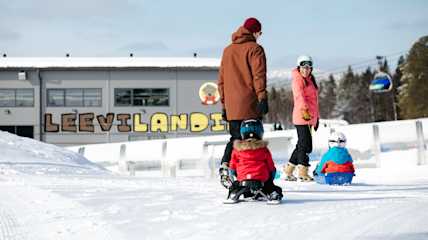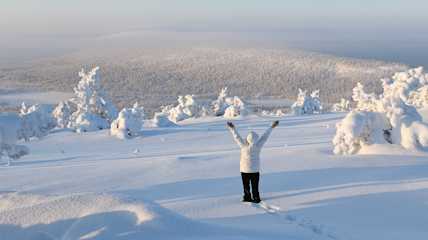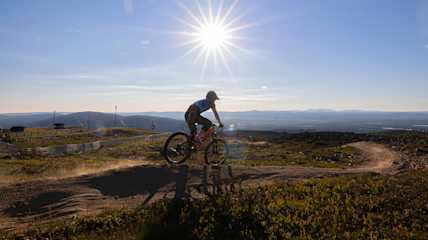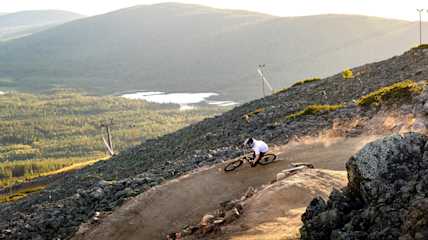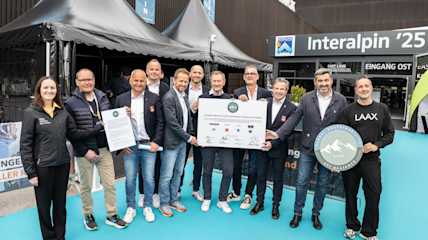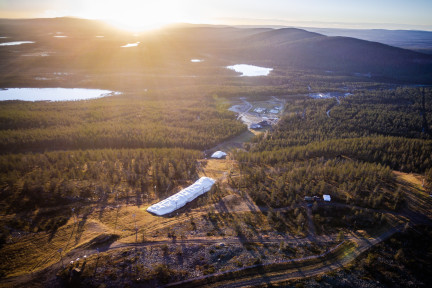
The secret of snow
Snow is one of the fundamental elements for a ski resort, without which the operation would be difficult. But how do we bring about the snowy wonderland? The secret to successful snowmaking in a ski resort consists of a group of professionals, data, and a bit of luck with the weather.
As the temperature falls below zero after the summer, snowmaking becomes priority number one in the ski resort, as the slopes cannot be opened if there is no snow. In the past, snow barriers, for example, were used to collect snow onto the slopes but producing snow artificially is much more efficient. The basic principle behind snowmaking has not changed much over the years. Snow is produced by spraying pressurized water into the air in freezing conditions through a blower or an extended compressed air nozzle, thus allowing it to crystallize into the snow.
“I began working as a snowmaker in Levi in 1985 when the first pipeline was installed onto the slope. At the time, we had access to four snow cannons that were all manually operated. Today, we have approximately 300 automatic cannons that can be controlled remotely via network access. Automation does not eliminate manual on-site work, but it has brought significant savings in terms of energy and water. Due to the advanced weather automation and remote control, we can produce significantly more snow with the same amount of energy and water than previously, as we are able to react immediately to changes in wind direction and other conditions on the fell. Our automatic snow cannons are only operational when the conditions are appropriate for snowmaking in the area in question,” says Hannu Levinheimo, who has had a long career in snowmaking at Levi Ski Resort, about the development of snowmaking over the years.
Data Helps Save Energy and Water in Snowmaking
Snowmaking on the slopes of Levi is based on an extensive snowmaking system that includes underground pipelines delivering water to automatic snow cannons placed all over the fell. Water is pumped into the system primarily from the Ounasjoki river, from where it travels five kilometres inside an underground pipeline all the way to the automatic cannons. The automatic cannons are equipped with dedicated weather sensors producing data that is used, among other things, to optimize the water pressure and the amount of water allowed through the cannon. Specific limit values are set for each cannon, determining the conditions in which the cannon is authorized to activate and when it should turn off. This improves the quality of the snow produced while saving water at the same time. Switching manual cannons on and off takes more time and is more labour-intensive than using automatic cannons, as water to manual cannons is supplied through hoses brought in separately. Manual cannons also have to be adjusted on-site, and if the slope has a large number of manual cannons, reacting to changes in the conditions is much slower than with automatic cannons.
“The weather conditions on the fell largely dictate where we can make snow. Next to sub-zero temperature, wind is the most decisive factor in snowmaking. Snow can only be produced downwind, which means that if the wind conditions are not favourable, the cannons are not activated. Outsiders may think it odd that cannons are running in different parts of the fell instead of being spread evenly throughout the slopes. The main reason for this tends to be the direction of the wind,” Hannu clarifies.
Experience is also highly significant to successful snowmaking. Levi Ski Resort employs a seasoned group of snowmakers, who are able to estimate how much snow is required for each section of the slope fairly accurately. Furthermore, cannon-specific data is constantly monitored and compared to water consumption from previous years. The aim in snowmaking is to ensure that no excess snow is made. This saves more energy and more water and allows us to minimize the snowmelt runoff in the spring, which has an impact on fell erosion.
Glacier is the Pinnacle of Snow Preservation
After snowmaking, snow farming is another key area for ski resorts. Preservation of snow is particularly environmentally friendly, as recycling and reutilizing snow during the next season reduces the need to make snow during the warmer conditions in the beginning of the season. This provides substantial savings in terms of both water and energy when snowmaking begins. Snow farming was introduced to Levi in 2016 in order to ensure that there would be enough snow for World Cup Levi after the previous year's competition was canceled. The first snow reserve piles were constructed on the Levi Black slope in the spring of 2016, and the preserved snow was spread onto the slopes a couple of weeks before the competition to avoid setbacks.
The ski resort learned a lot from the first year of snow farming and decided to focus more closely on the practice. Since then, various materials have been tested as snow pile covers to minimize the loss of preserved snow. Covering the snow with sawdust is one of the oldest techniques used for preservation, but it is a challenging method in windy fell conditions. In Levi, snow piles are protected using both fleece-style geotextile blankets and a new preservation technology developed by Snow Secure that utilizes the Finnfoam insulation material used in construction. The new method based on Finnfoam insulation allows us to reduce melting down to 30 percent, whereas with traditional technologies the loss of snow was approximately 30–50 percent.
In addition to the World Cup competition, snow is now preserved at the resort for the Front Slope for the early October downhill season and for the Northeast Slope for the opening of the ski season. Preserved snow is also used in June, when the Summer Park next to the Gondola2000 lift is open to freestyle skiers. The Glacier being built onto the Front Slope is the most recent result of the evolution of the preservation process, which is intended to maximize the efficiency of the preservation process in terms of both energy consumption and the amount of work carried out by the personnel and machinery. As part of the Glacier project, a new lift was built onto the Front Slope in the summer of 2022, and the skewed base of the slope was significantly smoothed out. The aim of the Glacier project is to create a consistent zone of preserved snow in the Front Slope, where the amount of recycled snow could be maximized while simultaneously minimizing the snowmelt. With the introduction of the chairlift, the amount of preserved snow that can be utilized on the slope is maximized. Preserved snow also provides a solid foundation for both natural snow and new artificial snow. Both the snowmaking equipment used in the slope section and the chairlift represent the latest and most energy-efficient equipment available. The Glacier's preserved snow base was created during the winter of 2022–2023, and the first skiers were able to carve through preserved Glacier snow at the beginning of the 2023–24 winter season, 6th of October.
